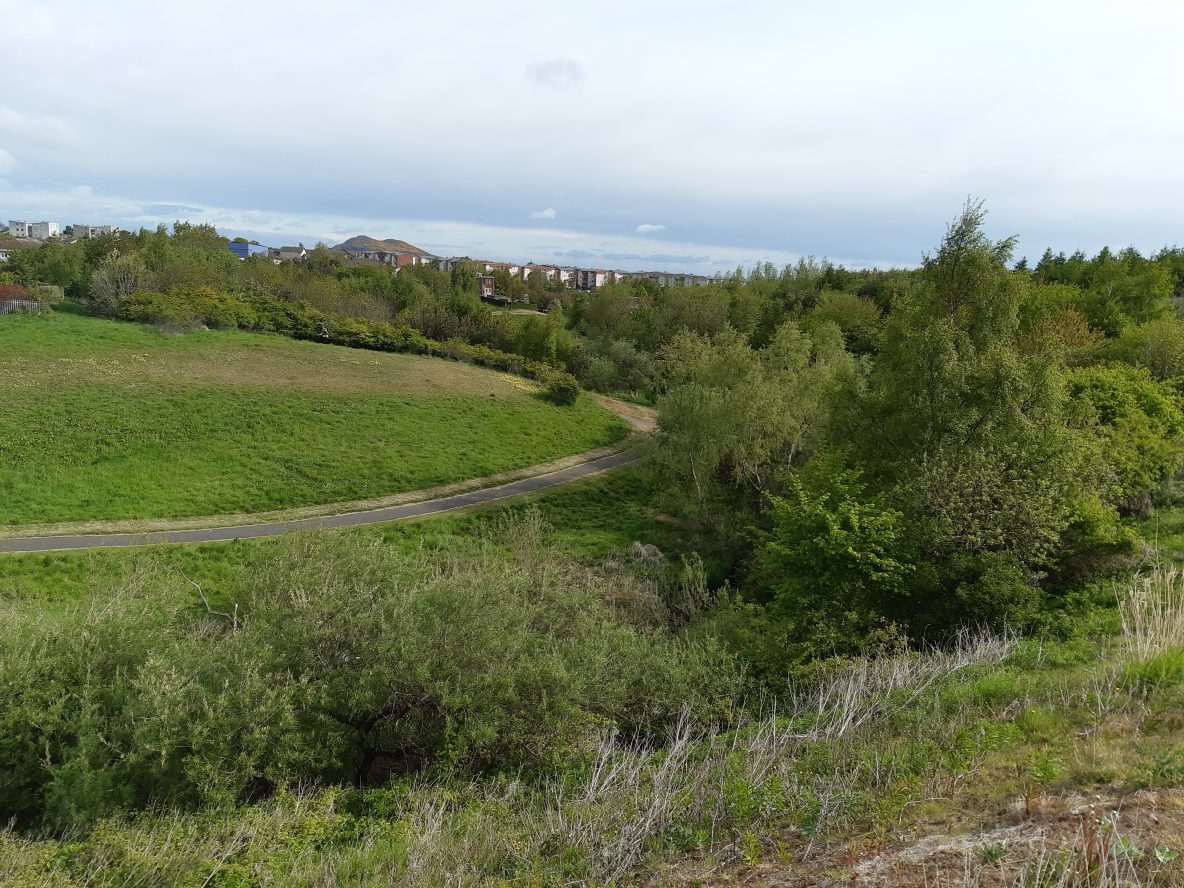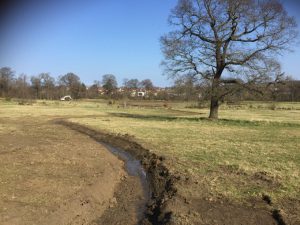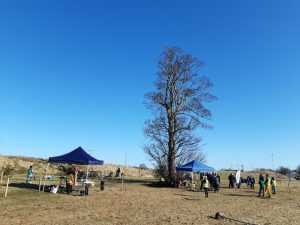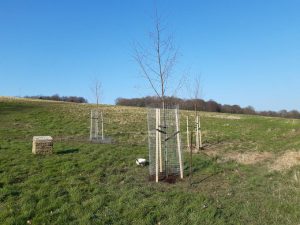Nature Restoration Projects
Nature Restoration Projects
Greenspace improvement projects to improve local biodiversity and help tackle the impacts of climate change.

The Nature Restoration projects aim to enhance the city’s low-quality biodiversity through a range of greenspace improvement projects. It includes the creation of wild-flower meadows and wetland areas which will help make space for nature in an urban area to address biodiversity loss. It is a key action as part of the Edinburgh Adapts Action plan 2016-2020 and the Edinburgh Biodiversity Action Plan 2019-2021 as well as the Edinburgh Living Landscape and associated green action plans.
The projects will enhance green infrastructure in critical urban ecosystems and provide a new corridor for wildlife as well as restoring degraded habitat and reducing fragmentation by:
- Enhancing quality of existing habitats – improving the species and structural diversity of remnant hedges and scrubland.
- Reinstating degraded habitats – establishing a higher species-richness using a local seed mix in the grassland and restoring a wetland area.
Habitat management and connectivity – It will help halt the decline of pollinators and increasing habitat for mammals and birds at risk by making more space for native flower rich habitats and grassland, extended hedges and scrub, specimen and orchard trees with supporting changes in management to favour diversity of species and habitat structure at a landscape level; adopting nature-based approaches to managing key ecosystems.
Urban nature-based solutions – It enhances wildflower meadows by providing a range of benefits for biodiversity. It is an enhanced green network that provides functional and visible links through and between town and country, allowing nature to move easily between the two. Wetland areas provides benefits to both the amenity value of parks and to biodiversity by alleviating flooding and the loss of habitat. It is an investment of nature in, close to, or benefiting disadvantaged communities in Edinburgh.
Targeted action – habitats
The project improves habitats by incorporating nature-based solutions that help mitigate against climate change and the impacts of climate change: It will do this by:
- Re-establishing nature-rich habitats which include the expansion of existing habitat
- Increase connectivity.
- Change new habitat management for nature.
The projects enhance habitat linkages which increases connectivity at a landscape/urban scale. It also helps the strategic habitat creation and enhance green networks in semi-urban areas from Edinburgh to the surrounding countryside.
Pentland to Portobello Greening
The project aims to improve a number of existing sections of green corridors which generally follow the line of watercourses including the Lothianburn, Burdiehouse Burn, Niddrie Burn, and Brunstane Burn, and aims to link these to form an extended green corridor linking from Swanston Village and the access network extending into the Pentlands northwards to Portobello and Joppa.
The route links from Swanston Village, through the Burdiehouse, Ellen’s Glen, Gilmerton, Moredun, Little France, Greendykes, Niddrie, Bingham, Magdalene, Brunstane and Joppa areas of Edinburgh. Many of these areas are in the most 20% deprived as per the Scottish Index of Multiple Deprivation.
The greenspace improvements and enhancements to the corridor will strengthen the route as a green access corridor, and as a means of delivering amenity and biodiversity benefits through a series of small-scale environmental improvements.
This project is supported by the Scottish Government’s Nature Restoration Fund, managed by NatureScot.
![]()
Biodiversity improvements to Edinburgh urban grasslands.
The project involves the enhancement of the city’s low-quality biodiversity urban grasslands through a mixture of amenity grass naturalisation and boundary improvements. The projects take place at Cammo Estate through the restoration of a wetland area for increased biodiversity and habitat enhancement. There will be habitat creation through hedge and specimen tree installation along with wildflower enrichment at Craigmillar Castle Park. There will also be tree planting and wildflower enrichment in Stenhouse.
Cammo Estate

A new burn has been restored to enable the wetland area to be created which provides an ideal nesting habitat for wetland birds, mice and bumblebees.
Stenhouse Greenspace
 New trees at Stenhouse will help to mitigate against flooding.
New trees at Stenhouse will help to mitigate against flooding.
Craigmillar Castle Park
 New specimen trees have been planted which will provide key features in the grassland area and help stabilise the soil.
New specimen trees have been planted which will provide key features in the grassland area and help stabilise the soil.
For more information about the project contact ross@elgt.org.uk
Funded by: NatureScot
Outputs:
- Wildflower meadow creation / enrichment planting – Areas of wildflower meadow will be approximately 1.94ha of grassland along the Pentland to Portobello route. 6.9ha of grassland enrichment at Craigmillar Castle Park.
- Hedging – create a well-structured hedge with a total length of 298 metres in Craigmillar Castle Park and 1505 metres along the Pentland to Portobello route.
- Scrub planting – Less formal “loose” hedgerow planting to create a wider, more wildlife friendly, and less intensively maintained edge feature using native shrub species with 547 trees along the Pentland to Portobello route.
- Individual Specimen Tree Planting – Planting of 10 standard trees within Craigmillar Castle Park and 78 standard trees along the Pentland to Portobello route.
- Tree group planting- Creating pockets of 3050m2 of trees along the Pentland to Portobello route.
- Orchard tree planting – Planting up 6 orchard trees in Burdiehouse Burn Valley Park.
- Wetland – The creation of a new burn section 280m long and a wetland approximately 60m by 50m at Cammo. Creation of a wetland area at Magdalene Glen which is 200m2.
- Riparian Enhancement- Planting 86 trees along the water courses of alder and willow along with other native species.
- Bulb planting –Planting up a total area of 2630m2 of native bulb planting, including native snow drops. This would provide an opportunity for volunteers to get involved.
- Invasive species control – Removal of invasive species including Japanese knotweed, few-flowered leek and rhododendron along the route which could be carried out with the help from volunteers.
Outcomes:
- Improve the biodiversity of urban grasslands
- Provide habitats for wildlife
- Improve the appearance of urban greenspaces
- Provide communities with the opportunity to help tackle the nature and climate emergency
